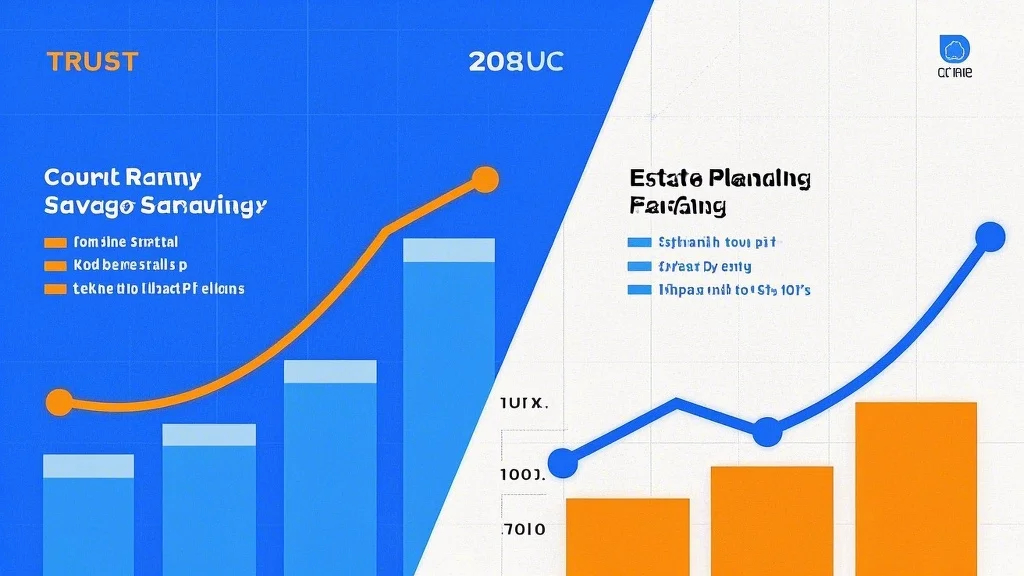Understanding FDIC Insurance and Its Limits
The FDIC is a United States government agency that insures bank deposits against bank failures. Since its establishment in 1933, the FDIC has provided a safety net for depositors, ensuring that their hard-earned money is protected up to certain limits. The standard insurance coverage provided by the FDIC is $250,000 per depositor, per insured bank, for each account ownership category.

For most people, this $250,000 limit may seem sufficient, but for those with more than $250,000 in deposits, or those who maintain multiple types of accounts, understanding how FDIC insurance applies across multiple accounts becomes critical. This is where multi-account protection comes into play.
What Is Multi-Account Protection?
Multi-account protection refers to the ability to extend FDIC insurance coverage beyond the standard $250,000 limit by maintaining multiple accounts under different ownership categories or at different banks. By strategically structuring your deposits, you can ensure that all your funds are protected, even if they exceed the FDIC’s single-account limit.
For example, consider an individual who maintains both a single account and a joint account at the same bank. Each of these accounts is insured separately under different ownership categories. This means that the single account is covered up to $250,000, and the joint account is also covered up to $250,000. Together, this provides a total coverage of $500,000 for the same depositor at the same bank.
How Does FDIC Insurance Apply to Multiple Accounts?
FDIC insurance coverage is based on the ownership category of the account. The following are the primary ownership categories recognized by the FDIC:
Single Accounts: Insured up to $250,000 per account holder.
Joint Accounts: Insured up to $250,000 per account holder, but since joint accounts are held by two or more individuals, the coverage is doubled for each co-owner.
Trust Accounts: Insured up to $250,000 per trustee or beneficiary.
Retirement Accounts (IRAs): Insured up to $250,000 per account holder.
Business Accounts: Insured up to $250,000 per business entity.
By understanding these categories, you can structure your accounts in a way that maximizes your FDIC coverage. For instance, if you are a married couple, you can open separate single accounts and joint accounts to maximize your coverage.
Strategies for Maximizing FDIC Coverage
Utilize Different Ownership Categories:
Open single accounts for individual protection.
Open joint accounts for added coverage for you and your spouse.
Consider trust accounts for estate planning purposes.
Maintain Accounts at Different Banks:
If you have deposits exceeding $250,000 at a single bank, consider spreading your deposits across multiple banks to ensure full coverage.
Take Advantage of Retirement Accounts:
IRAs are treated as separate entities for FDIC purposes, allowing you to add up to $250,000 in coverage per account holder.
Understand Business Accounts:
If you own a business, you can protect deposits up to $250,000 per business entity.
Examples of Multi-Account Protection
Let’s take a closer look at how multi-account protection can work in real-life scenarios.
Example 1: Single Account Holder
John has $400,000 in a single accounts at one bank.
Coverage: $250,000 for the single account.
Unprotected amount: $150,000.
To fully protect his deposits, John can open an additional account at a different bank.
John opens a second single account at another bank with $150,000.
Coverage: $150,000.
Total coverage: $400,000.
Example 2: Married Couple with Joint Accounts
Jane and Bob have $500,000 in a joint account.
Coverage: $500,000 (since each is covered up to $250,000).
In this case, their deposits are fully covered under the joint account.
Example 3: Business Owner with Multiple Accounts
Sarah owns a business with $300,000 in a business account.
Coverage: $250,000.
Unprotected amount: $50,000.
To protect the remaining $50,000, Sarah can open a personal account at the same or a different bank.
Sarah opens a single account with the remaining $50,000.
Coverage: $250,000.
Total coverage: $300,000.
Why Multi-Account Protection Matters
In today’s economic climate, where uncertainty is a constant, having peace of mind about your deposit safety is invaluable. By leveraging multi-account protection, you can ensure that all your deposits are fully insured, regardless of their size or the number of accounts you maintain.
It’s also important to stay informed about any changes to FDIC insurance rules. While the standard coverage limit has remained $250,000 per account holder, the FDIC regularly reviews and updates its policies to adapt to changing financial landscapes.
of Part 1
Understanding how FDIC insurance works and how to structure your accounts for maximum coverage is a smart financial move. By utilizing different ownership categories, maintaining accounts at multiple banks, and taking advantage of retirement accounts, you can ensure that your deposits are fully protected.
In the next part of this article, we’ll delve deeper into the nuances of multi-account protection, discuss common misconceptions, and provide actionable tips for maximizing your FDIC coverage. Stay tuned to learn more about how you can safeguard your financial future.
Unveiling the Full Potential of Multi-Account Protection
In Part 1, we explored the basics of FDIC insurance and how multi-account protection can help you maximize your coverage. Now, let’s dive deeper into this topic, addressing common questions, clarifying misconceptions, and providing actionable insights to help you make informed decisions about your bank deposits.
Common Questions About FDIC Insurance and Multi-Account Protection
Can I have multiple accounts at the same bank and still be fully insured?
Yes, as long as the accounts fall under different ownership categories. For example, a single account and a joint account at the same bank can each be insured up to $250,000.
Is there a limit to the number of accounts I can open for FDIC coverage?
There is no set limit on the number of accounts you can open, but you should ensure that each account falls under a distinct ownership category to maximize coverage.
How does FDIC insurance work for out-of-state banks?
FDIC insurance applies to all FDIC-insured banks, regardless of their location. Deposits in out-of-state banks are just as protected as those in local institutions.
Can I use a combination of accounts at the same bank and different banks to maximize coverage?
Yes, combining accounts at the same bank and different banks is a common strategy for maximizing FDIC coverage.
Myths and Misconceptions About FDIC Insurance
Myth 1: “All my deposits are automatically covered by FDIC insurance.”
While FDIC insurance is automatic for deposits up to $250,000 per ownership category, it’s essential to stay informed about your account structures to ensure full coverage.
Myth 2: “I can only have one account at a single bank to be fully insured.”
This is not true. You can have multiple accounts at the same bank, provided they fall under different ownership categories.
Myth 3: “FDIC insurance covers investments and other financial products.”
FDIC insurance only covers deposits in FDIC-insured bank accounts. It does not cover investments, annuities, or other non-deposit financial products.
Myth 4: “I need to purchase additional insurance to protect my deposits beyond $250,000.”
By structuring your deposits in different ownership categories or at different banks, you can extend your coverage without additional cost.
Advanced Strategies for Multi-Account Protection
Diversifying Accounts Across Ownership Categories:
Open single accounts, joint accounts, and trust accounts to fully utilize FDIC coverage.
Using Retirement Accounts for Additional Coverage:
IRAs are treated as separate ownership categories, allowing you to add up to $250,000 in coverage per account holder.
Exploring Business Accounts:
If you own a business, opening a business account can provide an additional $250,000 in coverage for business-related deposits.
Monitoring Your Coverage:
Periodically review your accounts to ensure that your coverage remains up-to-date and reflects any changes in your financial situation.
Case Studies: How Multi-Account Protection Works
Let’s revisit our earlier examples with a more detailed analysis.
Case Study 1: Single Account Holder with $400,000
Initial Situation: John has $400,000 in a single account at Bank A.
-_coverage: $250,000.
unprotected amount: $150,000.
Strategy: Open a second single account at Bank B with the remaining $150,000.
-_coverage: $250,000.
Total coverage: $400,000.
Case Study 2: Married Couple with Joint and Separate Accounts
Initial Situation: Jane and Bob have $500,000 in a joint account at Bank A.
Coverage: $500,000 (each is covered up to $250,000).
Strategy: No additional action needed, as their deposits are fully covered under the joint account.
Case Study 3: Business Owner with $300,000 in Business and Personal Accounts
Initial Situation:
Business account at Bank A: $200,000.
Coverage: $250,000.
Personal account at Bank A: $100,000.
Coverage: $250,000.
Total coverage: $300,000.
Strategy: No additional action needed, as both accounts are fully covered.
The Role of the FDIC Website
The FDIC provides a wealth of resources to help consumers understand their coverage and account structures. One of the most valuable tools available is the FDIC’s Electronic Map Branch (EMB), which allows you to look up the FDIC status of any bank and check the coverage of your accounts.
Another helpful resource is the FDIC’s insurance coverage calculator, which can be used to determine how much of your deposits are protected based on your account structures.
of Part 2
Multi-account protection is a powerful tool for safeguarding your deposits, but it requires careful planning and a thorough understanding of FDIC insurance rules. By diversifying your accounts across ownership categories, maintaining accounts at multiple banks, and leveraging retirement and business accounts, you can ensure that all your deposits are fully insured.
In today’s competitive financial landscape, taking the time to structure your accounts appropriately is an investment in your financial security. Whether you’re a single account holder, a married couple, or a business owner, maximizing your FDIC coverage is a smart and necessary step in protecting your hard-earned money.
By staying informed and utilizing the strategies outlined in this article, you can enjoy peace of mind knowing that your deposits are fully protected. Remember, the FDIC is there to help, but it’s up to you to ensure that your accounts are structured in a way that maximizes your coverage.
With this knowledge in hand, you can confidently manage your bank deposits, knowing that you’ve taken the necessary steps to safeguard your financial future.




